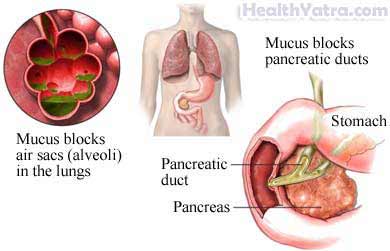Definition
Failure-to-thrive is when a child is not growing as expected. It does not include children who are small for their age. The exact definition is not completely agreed upon.
Children grow quickly in the first few years of life. A child with failure-to-thrive will have a height and weight that is well below other children of their age. Your child may have also had a normal growth pattern that began to slow down. Initially the child has similar height and weight than their peers but at follow-up appointments the child’s height and weight does not keep up with their peers.
In general, failure-to-thrive means that a child:
- Is at or below the 3rd to 5th percentile for height and weight. T
- Has failed to grow as expected. This is shown by dropping two growth percentiles. For example, the child goes from the 75th percentile to below the 25th percentile.
Failure-to-thrive is split into several types according to the cause. Types include:
- Organic failure-to-thrive—caused by some other medical condition
- Nonorganic failure-to-thrive—occurs in children with no known medical condition
- Mixed failure-to-thrive—occurs when the child has features of both organic and nonorganic failure-to-thrive
Causes
Causes include:
- Gastrointestinal disease may make it difficult for your child to eat or absorb food. This may include:
- Reflux —stomach acid backs up into the throat. This can make it uncomfortable to swallow.
- Pyloric stenosis —valve on the stomach can not close properly, this can lead to reflux.
- Cleft lip and/or palate —birth defects of the lip and roof of the mouth, this condition can make it difficult to eat solid foods.
- Hirschsprung’s disease —a condition that can cause a blockage in the intestines
- Hepatitis —liver disease that can cause general fatigue and ill feeling
- Cirrhosis —liver disease that can cause general fatigue and ill feeling
- Pancreatic insufficiency—pancrease helps digestion of fats, if there is a problem, food may not be properly absorbed into the body
- Malabsorption—general problem in the intestines ability to absorb food
- Milk protein intolerance—inability for the baby to digest proteins found in milk, even if the baby is taking in enough milk it is not getting to the body
- Kidney disease—can decrease your child’s appetite and impair growth
- Urinary tract infection
- Kidney failure
- Diabetes insipidus
- Heart and lung disease—can decrease your child’s appetite and impair growth
- Congestive heart failure
- Cystic fibrosis
- Asthma
- Heart or lung defects

- Endocrine disease—can decrease your child’s appetite or how the body processes food
- Thyroid problems
- Pituitary disease
- Diabetes
- Growth hormone deficiency
- Infectious disease—can decrease your child’s appetite and impair growth
- HIV
- Bacteria or parasites of the gastrointestinal tract
- Tuberculosis
- Breastfeeding difficulties including insufficient milk supply syndrome
- Chromosomal birth defects
- Fetal alcohol syndrome
- Lead poisoning
- Cancer
- Poverty
- Child abuse or negligence
- Parental ignorance
Risk Factors
Factors that may increase your child’s risk of failure-to-thrive include:
- Untreated medical conditions
- Poverty, including lack of available food
- Poor parenting skills
- Depression in the parent
- Severe family stress
Symptoms
Symptoms include:
- Slowed growth in a young child, including height and weight
- Slowed development, including late rolling, sitting, crawling, standing, walking, and talking
- Small muscles
- Weakness, low energy
- Hair loss
- Loose folds of skin
- Other symptoms related to an underlying medical condition
Diagnosis
Failure-to-thrive is diagnosed based on following a child’s growth. The doctor will plot your child’s weight, height, and head circumference on standard growth charts. If the child falls below a certain weight range or drops two percentiles on the growth chart, the doctor will evaluate the child further.
If a medical condition may be the cause, the doctor will order further tests. The type of tests will depend on the condition.
Sometimes, a child must be hospitalized for a period of time to find the cause of failure-to-thrive. During this time the doctor will:
- Monitor the relationship between parent and child, paying particular attention to their behavior around feeding
- Set up a feeding schedule with an adequate amount of calories
- Make sure that an appropriate feeding technique is used
If the child can gain weight under these circumstances, this supports the diagnosis of nonorganic failure-to-thrive.
Treatment
Treatment may include:
Treating a Medical Condition
Treating the underlying medical condition may correct failure-to-thrive.
Providing Extra Calories
Children who are malnourished may need liquid supplements. They can help to boost their weight and nutrition.
Parent Training
When a child is hospitalized for diagnosis, the hospital staff can also provide treatment. Nurses can teach parents appropriate feeding techniques. They may also show how to best interact with their child. If the child isn’t hospitalized, parents can still have training sessions with a nutritionist or a nurse.
Counseling
Parents and children who are having difficulty with their relationship may benefit from counseling.
Prevention
To help prevent failure to thrive:
- Take your children to the doctor regularly to have their growth checked. This helps detect and treat failure-to-thrive before it becomes severe.
- Develop a good relationship with your child’s doctor.
- Ask the doctor about proper parenting and nutrition for early in a baby’s life.
- Your doctor may recommend parent-training sessions.
